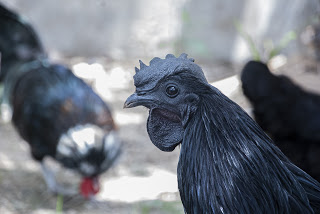Cultivation Of Coffee In India,Varieties And Uses
A Little Known Fact About Coffee
Coffee comes from a family called "Rubiaceae", and it is also known as beverage crop. The coffee was first found in Ethiopia and later it was taken to Arabic Countries maybe around the 11th Century. Brazil is the largest producer of Coffee in the world and India occupies 5th position in the production of coffee.
In India Coffee was first introduced by the saint known as "Baba Budan", he brought the coffee seeds while returning from Mecca maybe around the 17th century. Baba Budan planted the coffee seeds in the Baba Budan Giri, situated in Chikkamagaluru district of Karnataka. Later the Britishers showed keen interest in the cultivation of Coffee and developed coffee plantations in and around Chikkamagaluru, and Coorg district in Karnataka, parts of Kerala and Nilgiris in Tamilnadu.
Now the Coffee Plantations are seen in some states of India such as Assam, Hassan district in Karnataka, Araku Valley in Andhra Pradesh, Wayanad District in Kerala and Yercaud in Tamilnadu.
In the coming lines let us discuss the cultivation of Coffee.
Climate
The Coffee is mainly grown in hot and humid conditions, the Coffee doesn't grow well in frost conditions, the temperature around 10 degrees to 28 degrees is suitable for Coffee cultivation with rainfall about 2,100 to 2,300 mm per annum.
Coffee is grown mainly in higher altitudes within a range from 700 metres to 1600 metres and the Coffee grows in the shades of a tree.
Soil
Coffee is grown mainly in sandy loamy soil with a PH level from 5.0 to 6.0, before planting the seeds soil is tested. The soil erosion and fertility are protected by a way known as Mulching.
Land Preparation
Firstly the land is Prepared by ploughing about 5 times if any weeds are present it should be destroyed, before sowing of seeds one should choose quality seeds and well dried, the seeds are sown in about 3 cms spacing, generally, the germination takes up to 50 days and seedlings are separated and kept in polythene bags.
The Plants of Coffee are planted with a distance of 3m x 3m in a row in a pit of about 50cms, the seedlings of 6 to 18 months old are planted in the month of June to October, the seedlings are planted in such a way that stagnation of water is avoidable.
Irrigation And Fertilizers
Drip irrigation is the best method for irrigating Coffee Plant since this type irrigation have the capacity to control weeds, the irrigation is provided looking into the climate, age of a plant and level of moisture in the soil
The water should be given to plants in an interval of 10 days, and about 30mm of water may be given, too much water is avoided to control fungal diseases.
Fertilizers that are mainly used in the cultivation of coffee are Nitrogen, Potash and Phosphorous, these fertilizers are used in a plant with an age of 1 to 5 years and the average ratio of these fertilizers vary from 15:15:10 to 40:40:30.
Protection Of Coffee Plant from Disease and Pests
Some of the Diseases and pests that cause Coffee to low yield are:-
Diseases
a. Lead rust - shows symptoms of Pale yellow spots on the low surface of leaves, protected from Bordeaux mixture.
b. Root disease - shows symptoms of yellowing of leaves, Protected from uprooting the plant, the affected bushes are separated by digging a trench of about 65 cms deep and 35 cms width.
Pests
a. Green bug - targets separated bushes, protected by lebaycid 1000.
b. Cockchafers - protected from Lindane 20 EC.
Harvesting
The pre harvesting of Coffee includes Picking, stripping and cleaning.
The Post harvesting of Coffee includes:
1.Drying,
2.Grading,
3. Packing,
4.Storage.
Varieties
Some of the variety of Arabica Coffee includes:
1. Cauvery,
2. Sin.9,
3. Sin.10,
4. Sin.7(San Ramon Hybrids).
Uses
Some of the uses of Coffee are:
1. Reduces the risk of Diabetes.
2. Can prevent Alzheimer's disease.
3. Can protect from Parkinson's disease.
4. Works as Antioxidants.
5. Can lower heart diseases.
6. Can reduce depression.









No comments
New comments are not allowed.